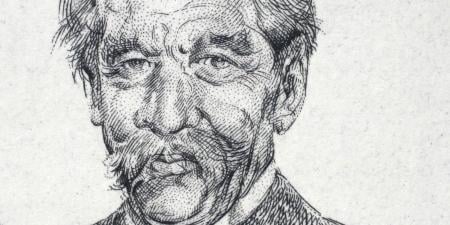Consider the case of 9-month-old Soleymane. She visited her village clinic in rural West Africa where a fourth-year medical student from the United States was doing a rotation. The initial exam revealed a very ill-appearing, febrile infant who was lethargic. She was also grunting and had chest wall retractions. The medical student assisted the nearest physician in arranging immediate transport to the local medical center for emergency treatment of cerebral malaria. Just as the local physician was discussing the situation with the infant’s parents, Soleymane went into cardiac arrest. The medical student started CPR, only to be told a minute later that his efforts were futile.
Occurrences like this are all too common in rural Africa. This continent, where thousands die each day from easily preventable diseases such as malaria, dehydration and diarrhea, serves as the ideal setting for medical students and residents who wish to experience medicine in the trenches. When deciding whether or not to do an international rotation, medical students must weigh the benefits and disadvantages inherent in these programs. While most of the rotations are brief, the impacts of the experience can be life-altering.
In one study students who had participated in an international experience in rural Nicaragua reported a growing awareness of the social determinants of health, an increased global perspective and an appreciation of cultural influences on health [1]. Other studies have noted that the most frequently reported outcome from an international experience was greater cultural sensitivity; participating students tended to think more positively about people from other countries and were more adept at treating patients with diverse cultural backgrounds [2]. Other secondary benefits included an increased interest in primary care, improved history and physical examination skills, and experience in practicing medicine with limited resources [3,4].
Students also experience many limitations and frustrations when working overseas. These include difficulties accepting local customs, beliefs and practices, the slow pace of implementing change and problems in communicating goals and objectives of the experience. While at the moment these frustrations may impinge upon the students’ experiences, in the long run, students benefit by learning how to cope with problems and find solutions.
Global Public Health
Recent outbreaks of severe acute respiratory syndrome (SARS) and Avian flu, the HIV/AIDS pandemic and the spread of multidrug-resistant tuberculosis have raised public awareness of international threats to public health and have spurred interests in global health. This interest has been supported by significant public and private investments in programs aimed at improving global health and limiting the spread of disease. The United States government has pledged $15 billion for HIV/AIDS prevention and treatment through the President’s Emergency Program for AIDS Relief (PEPFAR) [5]. The well-known work of the Bill and Melinda Gates Foundation [6] and the William J. Clinton Foundation has inspired other private sector foundations and donors to become involved.
Programs aimed at improving global health are often affiliated with academic medical centers. The increased resources associated with these programs have created support for undergraduate and graduate medical education to develop the next generation of global health physicians.
These international curricular offerings are of great interest to a growing number medical students. In 1982, an estimated 6 percent of U.S. medical students participated in an international rotation [7]. By 2004, that percentage had increased to 22.3 [8]. While students clearly perceive that they benefit in many ways from international rotation, the benefit to the citizens of the developing countries who receive the care is less well known.
Are We Really Helping?
Student clinical experiences overseas, especially in developing nations, involve a conflict between the ethical principles of beneficence and nonmaleficence. On the beneficence side, the students are working to provide care to those most in need. But this care is fragmented and temporary—and is being provided by those who have not yet completed training. Temporary, fragmented and inexpert care can be a source of harm as well as a source of benefit in most of the developing world. Is some care better than none? Yes. Even basic preventive care can save lives. Although we live in a highly technology-dependent society in the U.S., the level of technical expertise that we enjoy is not always necessary to prolong life and improve its quality. For example, more than one-quarter of Medicare expenses occur in the last year of life [9]. Some of this expenditure is relatively futile, minimally delaying death without improving quality of life. The absence of technology in developing countries forces students to focus on physical examination and history taking and to provide services that may amount to only comfort-giving and discourse.
One may be cynical here and say, as an Ayn Rand objectivist might, that the main reason medical students volunteer for electives in underdeveloped countries is that doing so is in their own rational self-interest; that is, they benefit more than their global patients.
A reasonable response to such a charge is this: the fact that those students promote their own learning by providing health care in underdeveloped countries does not diminish the help they provide to patients they serve there. Yes, Soleymane’s death is an invaluable lesson for the student. And, yes, the medical student’s presence, help in transport and administration of CPR gave Soleymane’s parents the solace of knowing that everything possible was being done for their baby.
As global health interests and activity rise, educational opportunities in global health experiences become increasingly available to medical students who want to explore this field. And as more encounter the challenges associated with such experiences, some may even question whether their desire to train overseas was a selfish one. But such direct experiences, and perhaps even the tangential cultural experiences, transform the students who have them, inspiring more lasting and widespread efforts to improve the health and quality of life of people around the globe.
References
- Smith JK, Weaver DB. Capturing medical student idealism. Ann Fam Med. 2006;4(Suppl 1):S32-S37.
- Mutchnik IS, Moyer CA, Stern DT. Expanding the boundaries of medical education: evidence for cross-cultural exchanges. Acad Med. 2003;78(10 Suppl):S1-S5.
- Bisonette RP, Route C. The educational effect of clinical rotations in nonindustrialized countries. Fam Med. 1994;26(4):226-231.
- Haq C, Rothenberg D, Gierde C, et al. New world views: preparing physicians in training for global health work. Fam Med. 2000;32(8):566-572.
-
The President’s emergency plan for AIDS relief [press release]. Washington, DC: The White House; January 29, 2003. Available at: http://www.whitehouse.gov/news/releases/2003/01/20030129-1.html. Accessed November 13, 2006.
-
Bill and Melinda Gates Foundation, The. Working with Botswana to Confront Its Devastating AIDS Crisis. Available at: http://www.gatesfoundation.org/AboutUs/OurWork/Learning/ACHAP. Accessed November 16, 2006.
- Wilson CL, Pust RE. Why teach international health? A view from the more developed part of the world. Educ Health. 1999;12(1):85-89.
-
Association of American Medical Colleges. 2004 Medical School Graduation Questionnaire: All Schools Report. Available at: http://www.aamc.org/data/gq/allschoolsreports/2004.pdf. Accessed November 16, 2006.
- Howard DH, Culler SD, Druss BG, Thorpe KE. The relationship between ex ante mortality and end-of-life medical costs. Appl Health Econ Health Policy. 2006;5(1):37-44.



